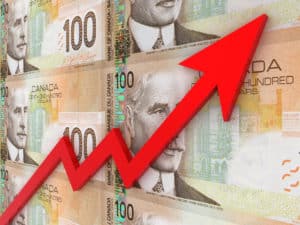This article was originally published on Fool.com
Investing in the stock market takes discipline. Just when you think everything looks like smooth sailing and your portfolio is moving steadily higher, market volatility shows up — often out of nowhere — and calls your entire investing strategy into question.
But the one lesson that smart investors have learned — usually the hard way, through past experience — is that if you want to be successful in the face of market volatility, you have to fight your emotions. Even though your knee-jerk reaction to a drop like what we saw Wednesday might be to sell everything and protect the rest of your assets, it’s not the right move. Instead, you have to put the market’s decline into perspective and find ways to take advantage of it.
Hype vs. reality
If you’ve read any financial news since the market closed on Wednesday, you might already be familiar with these scary-sounding facts:
- The 832-point drop in the Dow Jones Industrials was among the worst in the market benchmark’s history. Only twice — both times in February — has the Dow posted bigger declines in terms of points lost on a single day.
- Broader market measures also saw nearly unprecedented drops in point terms. For the S&P 500, the 95-point fall is the fourth-worst ever, while the Nasdaq Composite has only had a couple of sessions with losses worse than its 316-point downward move.
- Most stocks have seen marked declines from their recent highs. About two-thirds of the stocks in the S&P 500 have fallen at least 10% from their best levels, and almost three in 10 have posted a 20% drop — what some experts refer to as being in “bear-market territory.”
It’s easy for news sources to pump up investor panic with facts like these. But the reality isn’t nearly as dire, as long as you can get past the immediate pain of a daily drop like Wednesday’s and stay focused on your long-term strategic plan to build wealth. Here are some things to keep in mind.
-
Wednesday’s market decline wasn’t a “crash”
The most important thing to keep in mind about Wednesday’s downward move is that point-based declines can be extremely misleading. With the markets having climbed so far over the past decade, movements that used to be exceptional aren’t nearly as meaningful.
For instance, back in 1987, the Dow’s 508-point drop on what has subsequently become known as Black Monday seemed truly cataclysmic as it represented a nearly 23% decline in a single day. But even though Wednesday’s drop was much larger in terms of points, the fact that the Dow is now above 25,000 means that it translates into just about a 3% decline — a move that used to be a lot more common. Focus on percentages rather than points, and you’ll be able to assess market moves much more rationally.
-
Wednesday’s drop didn’t put a big dent in stock market gains
Given the way many talked about the decline, many people might have thought that their portfolios had been crushed. Yet even after an 832-point drop, the Dow was still up 880 points on the year, and the S&P and Nasdaq also remain higher year to date in 2018.
The same is true for key stocks that took even bigger hits than the overall market on Wednesday. E-commerce giant Amazon.com finished nearly 15% below its best levels ever in early September, while streaming video pioneer Netflix has seen roughly 20% declines from its peak. Yet for long-term investors, Amazon is still up 50% in 2018 alone, and Netflix has produced nearly a 70% return for shareholders so far this year. If you had decided never to invest in these two stocks because you feared suffering big declines, you would indeed have avoided these downturns — but you never would have achieved these huge returns either.
-
In time, you’ll forget about the market’s drops
It’s hard to believe when the market seems to be in free fall that you won’t always remember the pain that the drop caused. But the market has always bounced back from adversity, and smart investors take faith from that past experience and use it to make what seem to be bold moves.
You don’t even have to go back that far to see a great example of this. In February, the Dow suffered not one but two declines of more than 1,000 points in short succession. Those drops were part of a broader market correction that eventually sent the market down roughly 12% in less than a month. Yet in less than eight months, the Dow recovered those losses and reached new all-time highs. In hindsight, what seemed like gargantuan plunges marked only a brief pause in the bull market.
-
Channel your inner greed
One of Warren Buffett’s most famous quotes advises investors to “be fearful when others are greedy, and greedy when others are fearful.” Big market drops are the best time to follow the Oracle of Omaha’s advice by looking more closely at stocks that have suddenly gotten a lot cheaper to buy.
It’s tough to be unemotional in evaluating stocks after a big market drop, because short-term fears about a company’s immediate future are hard to ignore. But if you’ve already researched a company and put it on your watch list, then it’s a lot easier to make the rational decision to add shares when a bargain opportunity presents itself.
Stay calm and prosper
It’s always tempting after a big drop in the stock market to take your profits and run. The smarter, time-tested move, though, is to stick with your long-term investing plan — and for the best investors, that often means looking for attractive opportunities to buy promising stocks at cheaper prices.







